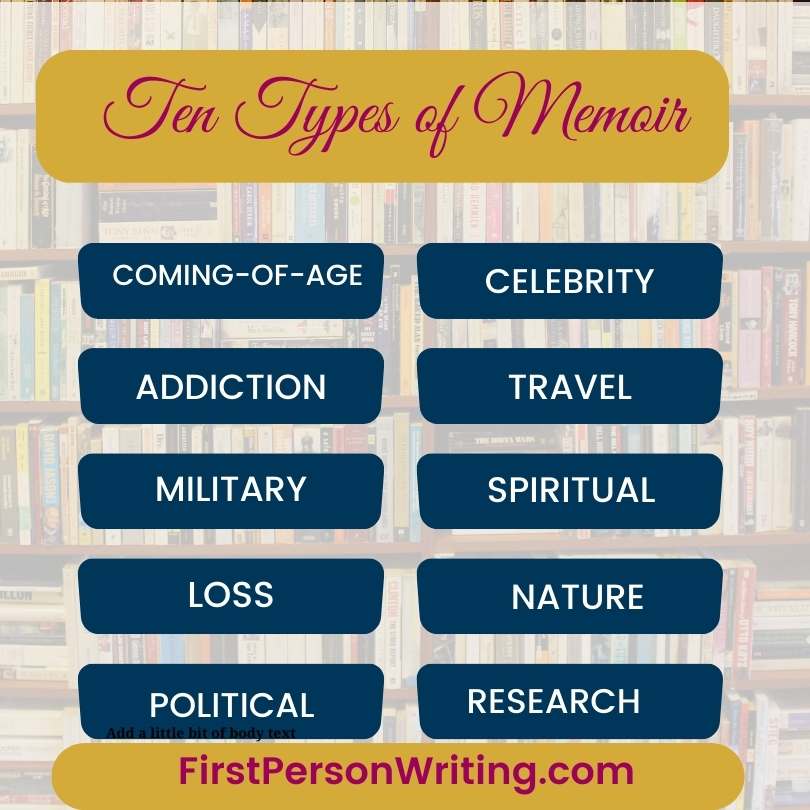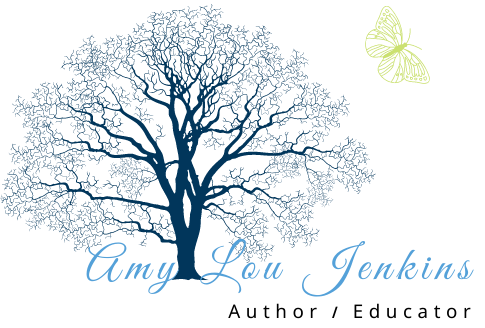
Ten Types of Memoir /with examples
Memoirs offer meaning and insight in the form of personal stories. They offer lived insight into the vulnerability, complexity, and triumphs of individuals. Most memoirs are before and after stories. Something has changed, usually the protagonist. The best memoir pulls the reader through the author’s experience. Rather than being told what happened, the reader has an experience. Here are ten types of memoirs that offer stories for artful reading or listening experiences. Read for enjoyment or find your mentor texts.
Coming-of-age
Coming-of-age memoirs explore the transformative period between adolescence and adulthood. Yet, twists on this could include entering parenthood, old age, or a terminal phase of life. Coming of age memoirs focus on the struggles, triumphs, and growth that individuals experience during this time. like all memoirs, the stories include universal themes, so that when reading about those with lives very different than one's own life, the story can have personal resonance for the reader. Examples of such memoirs are ‘The House on Mango Street’ by Sandra Cisneros, ‘Persepolis’ by Marjane Satrapi, and ‘The Glass Castle’ by Jeannette Walls.
Celebrity
Celebrity memoirs offer an inside look into the lives, careers, and struggles of the famous. They offer readers a chance to know their favorite celebrities on a personal level. The best of them include universal themes so that the story is more than a voyeuristic porthole. Examples of such memoirs are ‘Becoming’ by Michelle Obama, ‘Open’ by Andre Agassi, and ‘Born a Crime’ by Trevor Noah. Memoirs may also offer self-help such as ‘Greenlights’ by Matthew McConaughey. Often celebrities narrate the audiobook, making the experience even more personal.
Travel
Travel memoirs offer readers the opportunity to explore new places, experience different cultures, and learn about the history and traditions of various countries. Examples of such memoirs are ‘Wild’ by Cheryl Strayed, ‘Eat, Pray, Love’ by Elizabeth Gilbert, and ‘The Great Railway Bazaar’ by Paul Theroux.
Addiction
Addiction memoirs are a genre of literature that can provide readers with a unique insight into the mind of an addict. These memoirs detail the struggles and triumphs of individuals as they battle addiction and attempt to regain control of their lives. Readers don’t have to be addicts to appreciate the before-and-after stories of triumph. Two examples of addiction memoir follow.
‘Dry, by Augusten Burroughs’ provides a raw and honest account of the toll that addiction can take. Burroughs’ story wrenches the heart, but his humor and wit carry the reader through a page-turner. In ‘My Life in a Bottle,’ Susan Cheever details her struggles with alcoholism and her journey towards recovery. The memoir provides a deeply personal and emotional account of Cheever’s battle with addiction. The book is a testament to the power of resilience and self-care in the face of addiction.
Spiritual
Spiritual memoirs may focus on spiritual teaching with a few personal. stories, or they may focus on a personal journey to gain spiritual growth. These books often chronicle the author's personal journey toward spiritual enlightenment. Eckhart Tolle's ‘The Power of Now’ is a prime example of a spiritual memoir that has captivated readers with its message of being present and living in the moment. Another book that has gained popularity is’ Eat, Pray, Love’ by Elizabeth Gilbert, which follows her journey of self-discovery through food, meditation, and relationships.
Political
Political memoirs are always intriguing as they give readers a glimpse of the behind-the-scenes action of the political world. Two examples of these memoirs are ‘What Happened’ by Hillary Rodham Clinton and ‘The Audacity of Hope’ by Barack Obama.
What Happened is an honest reflection of the 2016 US Presidential election campaign. Clinton delivers a candid account of the events and the factors that led to her losing the election. Her memoir provides an excellent understanding of the political landscape and the issues that surrounded the historic election campaign.
Nature
Nature memoirs are a genre of literature that combines elements of memoir and nature writing. These books typically focus on the author’s personal experiences with the natural world. Nature books can be about the environment but, nature writing may the environment as a setting and character within an exploration of any topic.
Two excellent examples of nature memoirs are Every Natural Fact by Amy Lou Jenkins and The Home Place by J. Drew Lanham. In Every Natural Fact, Jenkins shares her series of hikes with her son who is moving into adolescence as they explore some of life’s big questions.
In The Home Place, Lanham reflects on his childhood growing up on a farm in South Carolina. The book explores his complex relationship with the land and how it has influenced his identity as an African American man. Through his observations of birds and other wildlife, Lanham explores the ways in which nature has both divided and united people throughout history.
Loss
Memoirs of loss can be poignant and powerful pieces of literature. Whether it’s the loss of a loved one, a relationship or even a part of oneself, these before and after and after stories can leave breadcrumbs to a path of healing.
One of the most notable examples of this is Joan Didion’s ‘The Year of Magical Thinking,’ which recounts the sudden death of her husband and the tragic illness of her daughter. Her frank and honest approach to her grief. She names feelings so that a reader can see the movement or stagnation in pain. Another example is Wave by Sonali Deraniyagala. She lost her parents, husband, and children in the 2004 Indian Ocean tsunami. The book is a raw and unflinching account of the devastation and trauma she experienced.
Memoirs of loss can be difficult to read, but they offer a profound insight into the resilience of the human spirit to build a new way to exist within the loss.
Military
These personal accounts often detail the experiences of soldiers, the challenges they face, and the sacrifices they make, and the tentacles of trauma that reach into post-military life. One example of a military memoir is ‘American Sniper’ by Chris Kyle, which tells the story of a Navy SEAL who served multiple tours in Iraq and became known as one of the most lethal snipers in U.S. military history. Another impactful military memoir is ‘The Things They Carried’ by Tim O’Brien, which portrays the psychological burden of war through a collection of short stories based on O’Brien’s own experiences in Vietnam. These memoirs provide a unique perspective on the realities of war and the strength of the human spirit in times of conflict.
Research
A research memoir is a type of literary work that combines the elements of personal experience with the rigor of research. This is one of my favorite type of memoir. Reading these books engages my heart and intellect. It’s the difference between reading a textbook about Paris and being seated at a dinner party next to a charismatic raconteur who has lived in Paris and taught its history at the graduate level. They are full of fun stories and understand the pulse of the city.
An engaging voice is the key to a research essay
The research memoir relies on an engaging voice, marvelous stories, unifying themes, credible facts, and analysis. It’s a way of exploring a topic through one’s own experiences and investigative work. The aim of a research memoir is generally to bring together the subjective and objective aspects of a topic and gain a deeper understanding of it. They offer insider intel. They also present fascinating facts and ideas for brains that crave novelty.
Examples of research memoirs include:
‘The Immortal Life of Henrietta Lacks’ by Rebecca Skloot, which investigates the story of an African American woman whose cancer cells were taken without her consent and became one of the most important tools in medicine. Skloot combines her own experiences researching the story with the experiences of the Lacks family to create a moving and informative account.
‘Lab Girl’ by Hope Jahren, a memoir that combines the author’s experiences as a scientist with her personal struggles and relationships. Jahren’s story sheds light on the complexities of scientific research and the personal sacrifices one must make in order to pursue their passions.
‘The Emperor of All Maladies: A Biography of Cancer’ by Siddhartha Mukherjee, which offers a historical and scientific overview of cancer research. Mukherjee’s memoir also includes personal stories of his own patients and their battles with cancer, making the scientific information more accessible.
In conclusion, these ten types of memoirs offer readers a diverse and fascinating range of perspectives, experiences, and stories. They inspire, motivate, enlighten, and make us feel more connected to the world. Yet memoirs may not all fit neatly into one category.
One book, several categories
Many memoirs straddle several categories. Strayed’s ‘Wild’ may fit the coming-of-age, nature, and travel type. Some memoirs may be very personal as in Mackenzie Phillips’ confessions in ‘High on Arrival’ or they may focus on academic obsessions, as in Merlin Sheldrake’s ‘Entangled Lives.’ Sheldrake deep plunge into fungus fulfills the structure of the before and after story. I know; it's a book about fungus. Really -it's a great book and a NYT bestseller. The authors’ insight into fungus changes the way he and the reader see a world of life previously divided into plants and animals-but that insight was incomplete. It’s also full of primary investigation, making it a highly credible research memoir.
First-person narratives can both engage and inform. They may offer one narrative or be presented as an essay collection. They, like all literature, offer artful stories to enrich our lives. Read and write memoirs to add meaning to life.


